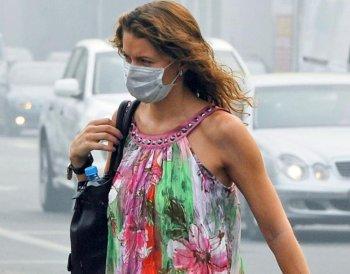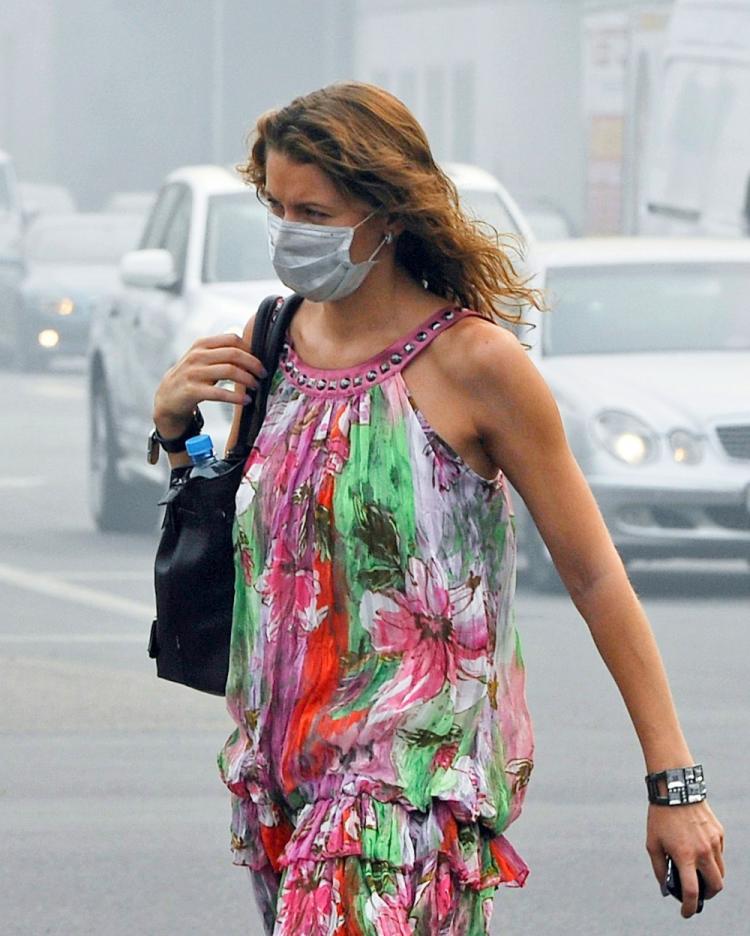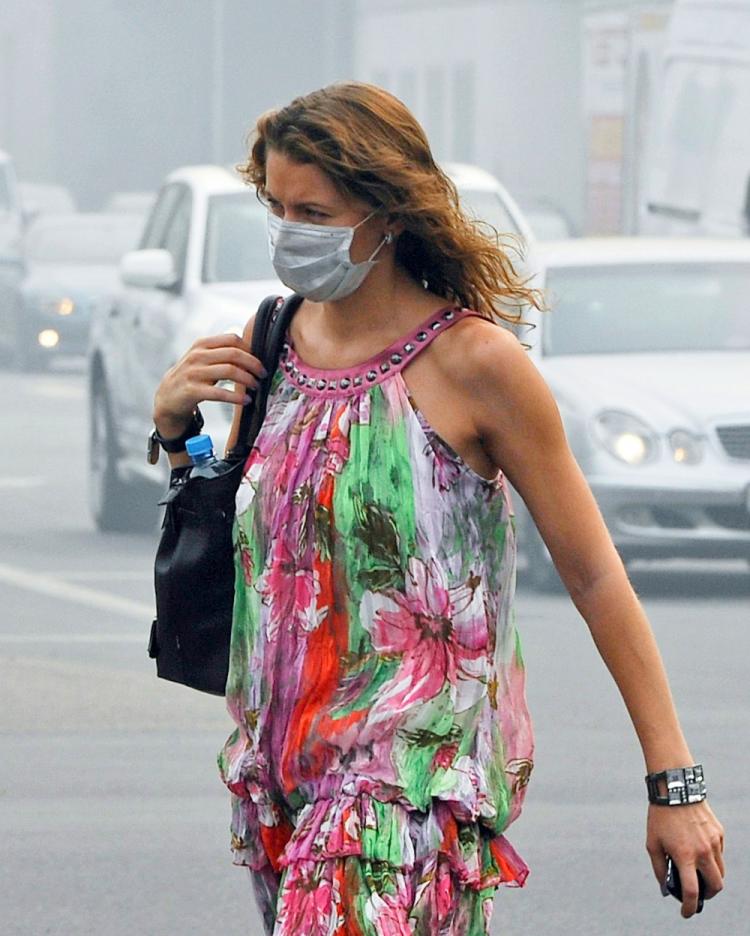Toxic Smog Sweeps Across Russia
Nearly 2,000 miles of smoke sweeping across Russia contains high levels of toxic gases.

A Russian woman wears a face mask to protect herself from acrid smoke while walking in central Moscow on August 9, 2010. Natalia Kolesnikova/AFP/Getty Images
|Updated:


